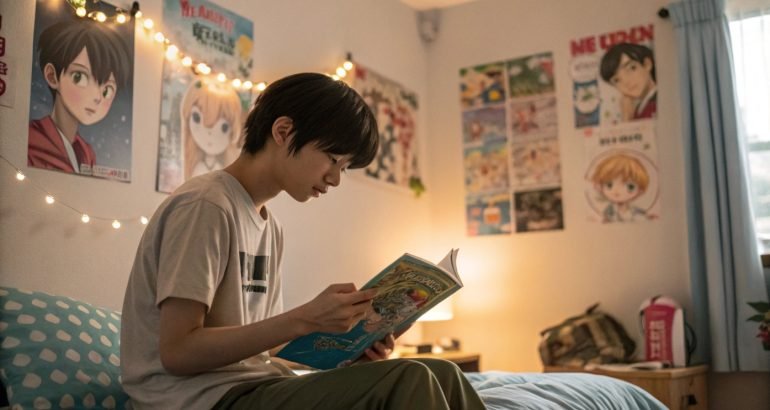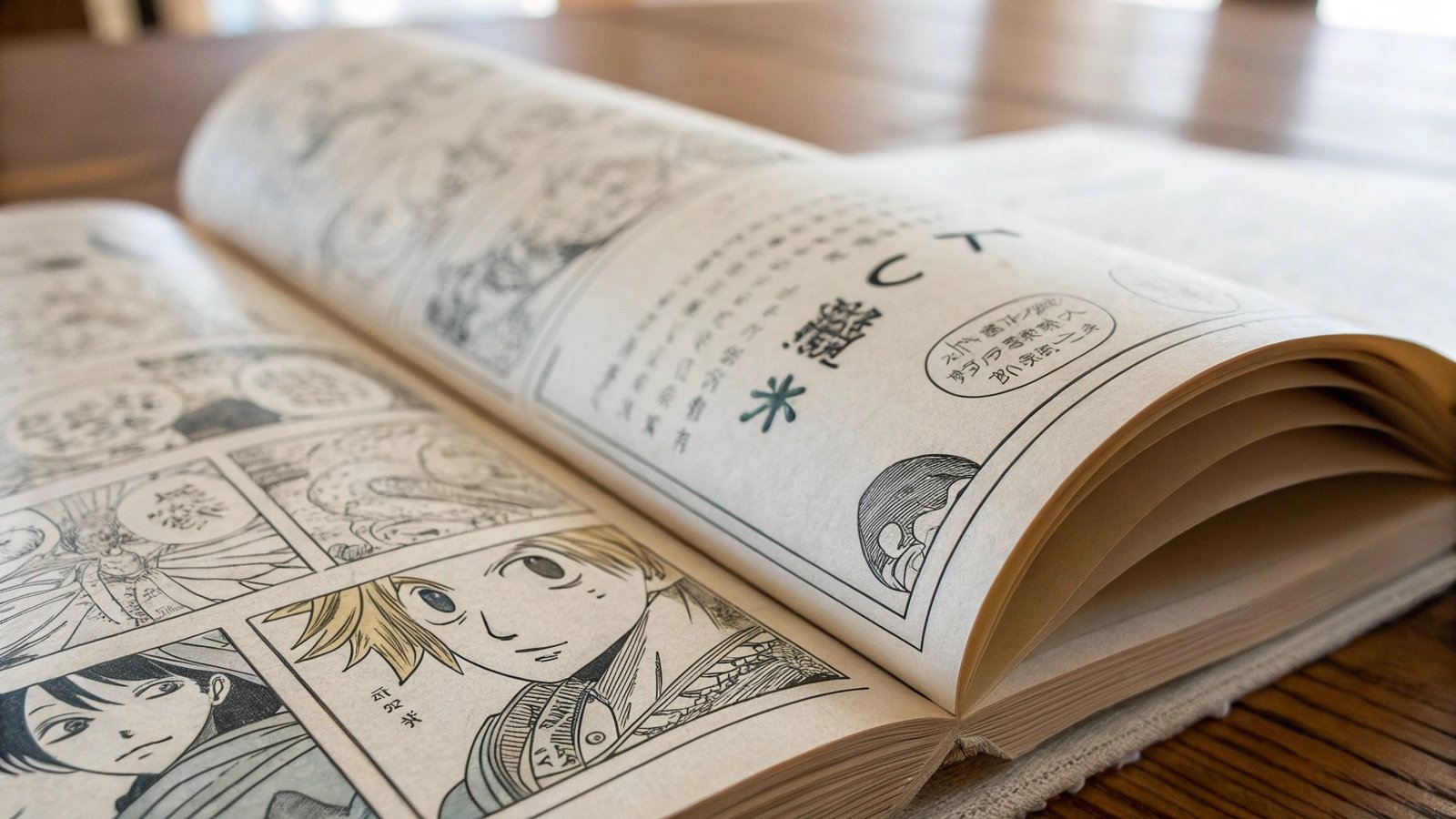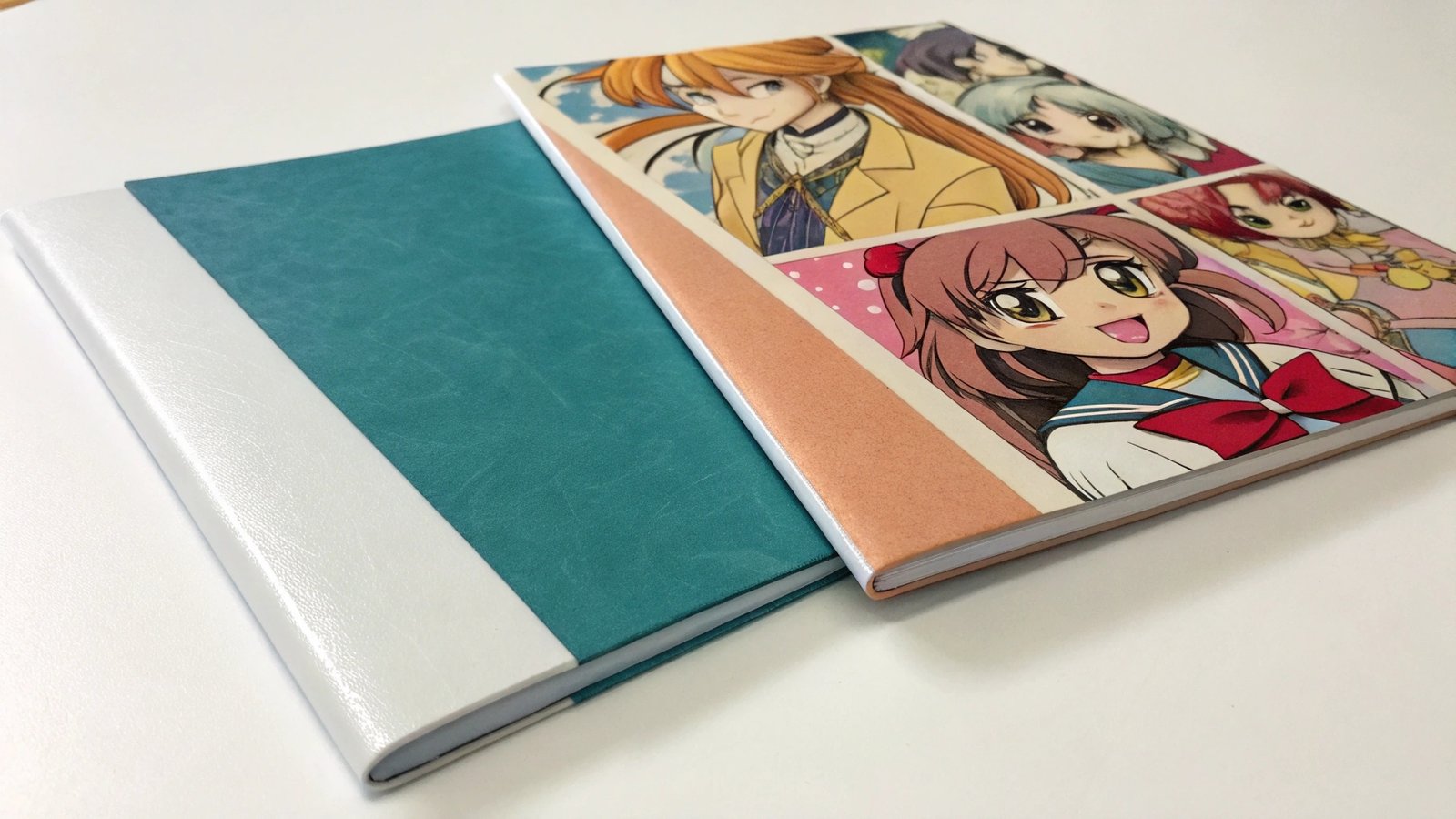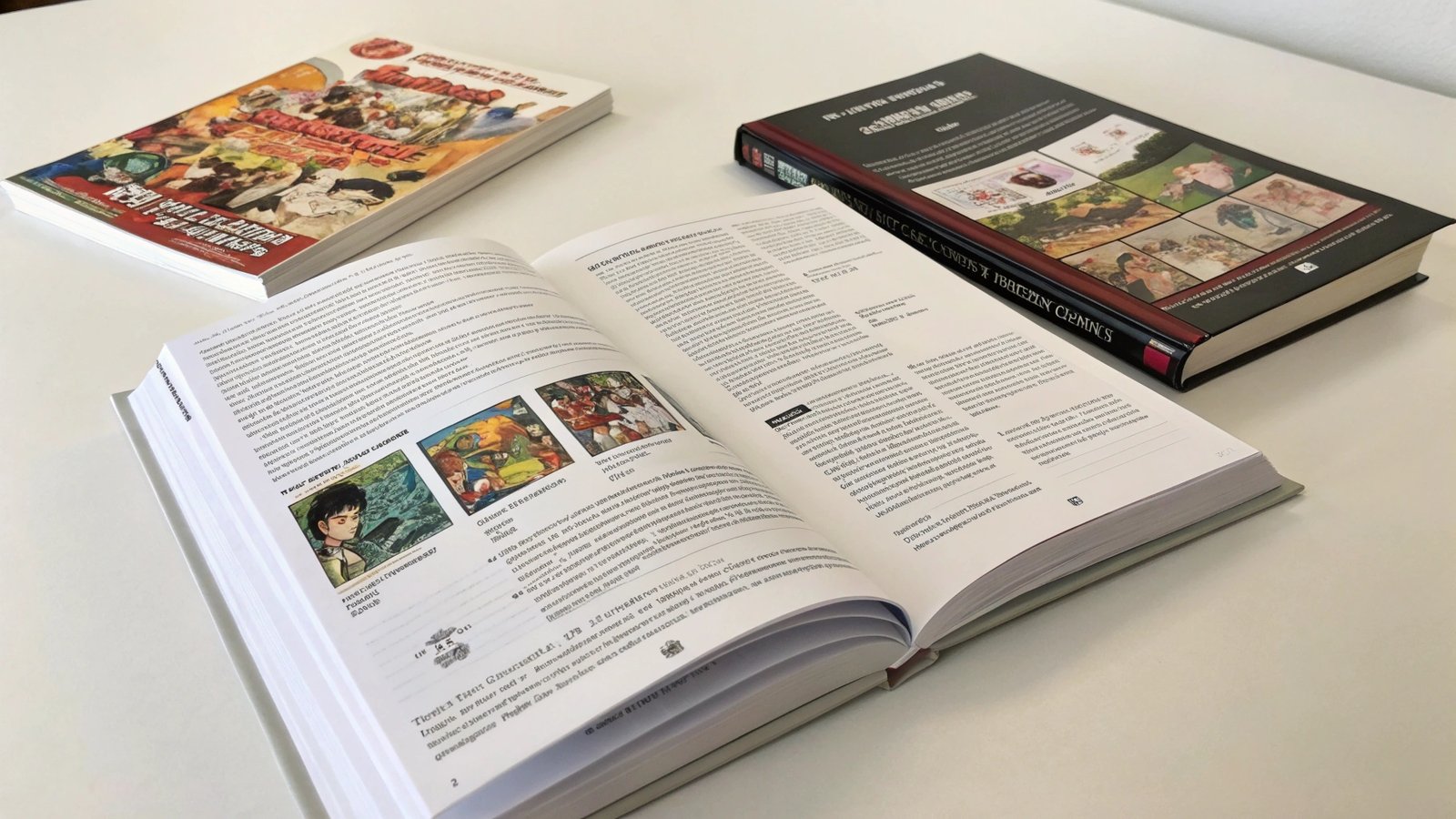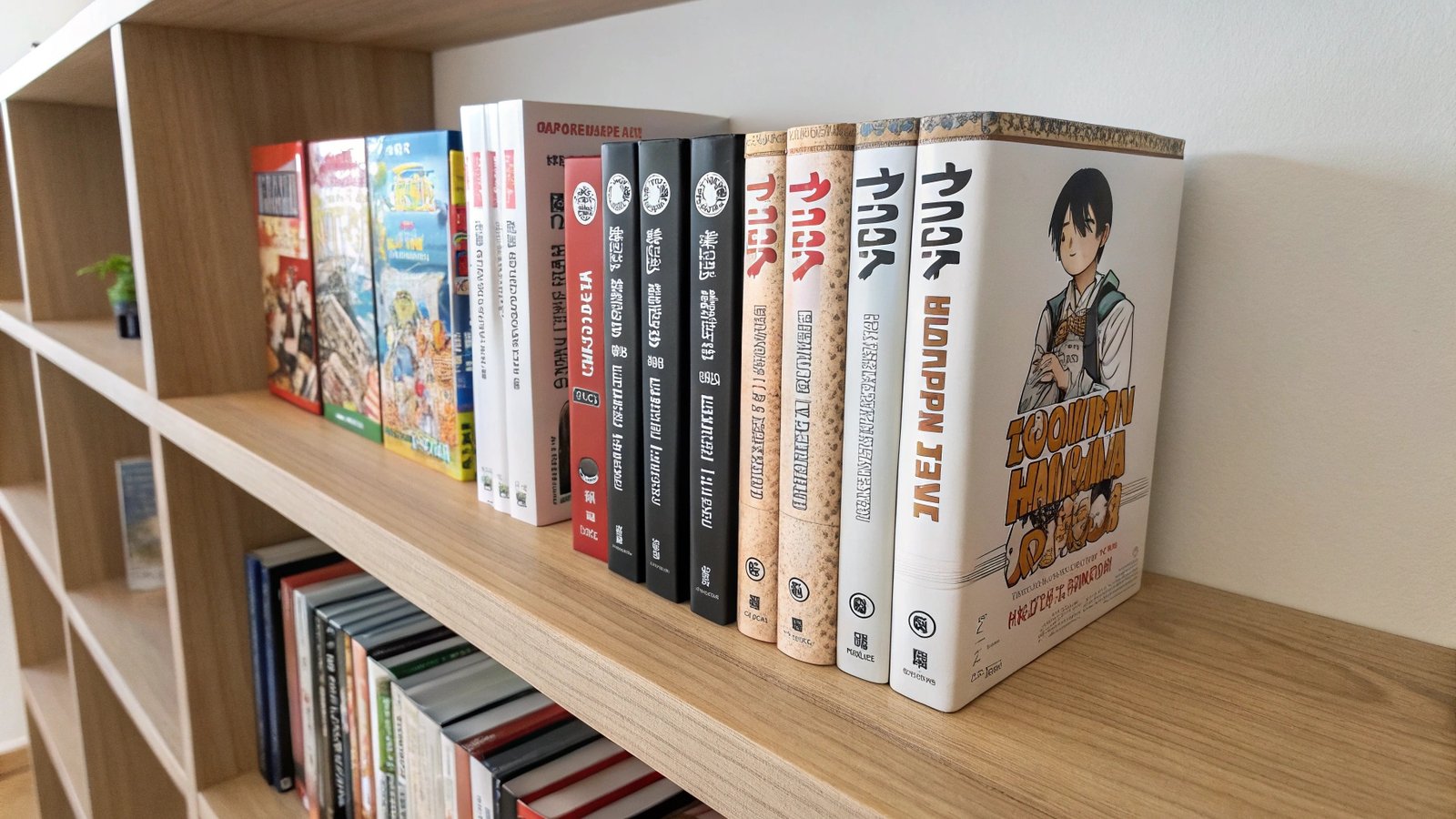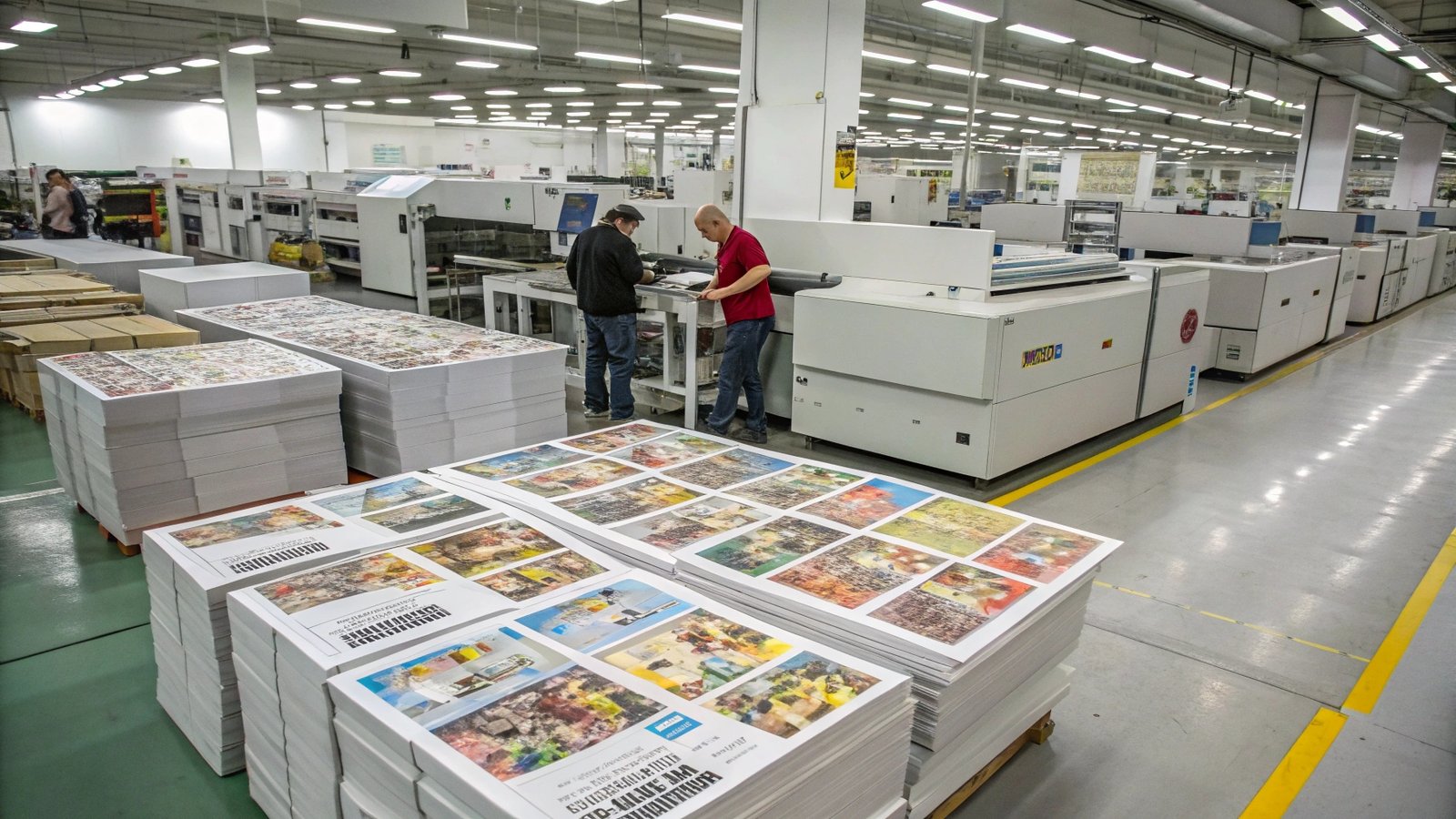Struggling to pick the right paper for your manga? The wrong choice can ruin your artwork, making it look dull and unprofessional. Let me guide you through the process.
To perfectly print your manga, choose a paper that makes your illustrations shine. Coated papers provide sharp, vibrant images with deep colors, while high-brightness uncoated papers offer a softer, more traditional feel. The choice depends on the artistic style and desired quality of your final book.
Making these choices can feel complicated. As someone who grew up in the printing business, I’ve seen how paper and finishing can make or break a book. It’s not just about putting ink on a page; it’s about bringing your story and art to life exactly as you imagined it. A little knowledge goes a long way in turning a good manga into a great one. Let’s walk through the key decisions you’ll need to make to ensure your project is a success.
What type of paper is used to print manga?
Are you confused by all the paper options out there? Choosing incorrectly can make your carefully drawn art look flat. Let’s look at the best paper types for manga.
For manga, you generally choose between coated and uncoated paper1r](https://en.canson.com/expert-advice/manga-selecting-your-paper)[^2]. Coated paper makes colors pop and lines look crisp, which is great for vibrant, detailed art [1]. Uncoated paper gives a softer, more classic feel, which some artists prefer for a traditional black-and-white look.
Let’s dive deeper into these two main categories. The core difference is how the paper interacts with ink.
Coated paper has a layer, often made of clay or a polymer, applied during manufacturing [1, 3]. This coating fills in the tiny gaps between the paper fibers, creating a very smooth and less porous surface [1, 4]. Because the paper is less absorbent, the ink sits on top of it [1, 2]. This results in much sharper, crisper images and more vibrant colors [3, 4]. This is ideal for manga with complex details or rich color pages. Coated paper is also more resistant to dirt and moisture, making the book more durable [1, 3, 4].
Uncoated paper, on the other hand, has no such coating [2]. Its surface is more textured and it absorbs more ink, like a sponge [2, 3]. This absorption can cause images to appear softer and less defined, and colors may look a bit duller compared to how they appear on a screen [1, 3]. However, this isn’t always a negative. For certain art styles, this softer look can be very effective. It also gives the book a more classic, refined feel and is easier to read under direct light [3].
Here’s a simple table to help you decide:
| Feature | Coated Paper | Uncoated Paper |
|---|---|---|
| Image Quality | Very sharp and crisp [1] | Softer and less defined [4] |
| Color | Bright and vibrant [2] | Can appear duller or darker [3] |
| Feel | Smooth, with a matte or gloss finish [1] | More natural, textured feel [3] |
| Best For | Action-packed manga, color pages, modern look. | Story-focused manga, classic B&W, refined art. |
| Durability | More resistant to wear, tear, and moisture [3]. | More susceptible to wear and dirt. |
Can I use A4 paper to print my manga?
Thinking about using standard office paper for your manga? A4 is just a size, not a type, and it won’t give you professional results. Let’s clarify what you really need.
You can print on A4-sized paper, but standard office A4 paper is not suitable for a quality manga book. It’s typically a thin, low-grade uncoated stock that absorbs too much ink, making your art look blurry and dull. It is not recommended for a final product.
It’s a common point of confusion, so let’s break it down. "A4" refers to a specific dimension: 210 x 297 millimeters. It’s a standard size for documents in most of the world, but it says nothing about the paper’s quality, thickness, or finish. The paper you find in an office printer is usually a lightweight, uncoated stock, chosen for being cheap and functional for printing text documents.
When you print detailed manga illustrations on this type of paper, you run into problems. As we’ve discussed, standard uncoated paper is very absorbent [3]. The ink bleeds into the fibers, which makes sharp lines look fuzzy and can make large black areas appear gray and blotchy. Furthermore, this paper is often very thin. This leads to a major issue called "show-through," where the art printed on one side of the page is visible from the other. This is incredibly distracting for the reader and looks unprofessional. For a quality manga, you need paper that is thick enough to prevent this. We measure this thickness in GSM (grams per square meter) or pounds. While you can purchase high-quality coated or thick uncoated paper cut to an A4 size, you should never use standard office A4 paper for your final book.
What is the best paper size for printing manga?
Does choosing a size for your manga feel overwhelming? If you pick the wrong one, it might not feel like an authentic manga. Let’s look at the standard industry sizes.
There isn’t a single "best" size, but Japanese manga commonly uses standard sizes like Tankōbon (about 5" x 7") or the smaller Bunkoban (about 4.1" x 5.8"). Choosing a standard size ensures the book feels authentic and is often more affordable to print.
The size of your book, also known as the trim size, has a huge impact on the reader’s experience and your production costs. In my 37 years in the printing business, I’ve seen that sticking to industry standards is almost always the best path, especially for new creators. It ensures the book feels right in the reader’s hands.
Here are the most common manga formats:
Common Manga Formats
- Tankōbon (単行本): This is the most popular format, equivalent to a standard trade paperback or graphic novel in the West. It’s the size most people think of when they picture a manga volume. It is used to collect individual chapters previously published in a magazine.
- Bunkoban (文庫版): This is a smaller, A6-sized "pocket book" format. It’s highly portable and often used for re-releases of popular series. The smaller size means the art is more condensed, but it’s very convenient for readers on the go.
- Waideban (ワイド版 / Wide-ban): This is a larger format, similar in size to many American comics or magazines. It’s used for special or deluxe editions and allows the artwork to be showcased in greater detail.
Here’s a table to compare them:
| Format Name | Typical Dimensions (Inches / CM) | Best For |
|---|---|---|
| Tankōbon | ~5.04" x 7.17" / 12.8cm x 18.2cm | The standard for most manga series; a good balance of size and cost. |
| Bunkoban | ~4.1" x 5.8" / 10.5cm x 14.8cm | Re-releases, portable editions, and text-heavy manga novels. |
| Waideban | ~7" x 10" / 18.2cm x 25.7cm (B5 size) | Deluxe editions, art books, and series with highly detailed artwork. |
From a printer’s perspective, I always advise my clients to stick close to these sizes. Printers buy paper in massive parent sheets, and we cut them down to size for your book. Standard sizes are designed to maximize the number of pages we can get from one parent sheet, which means less paper waste and a lower cost for you.
Where is most manga printed?
Ever wonder where all these millions of manga books come from? The printing location can have a big impact on the cost, quality, and logistics of your project. Let’s explore this.
While manga originates in Japan, a huge amount of it for international markets, including the US and Europe, is printed in China. This is because China offers a powerful combination of advanced printing facilities, a skilled workforce, and lower costs for large print runs.
It’s a global industry. For books sold within Japan, printing is typically done by Japanese printers. They are masters of their craft and have a deep understanding of the domestic market’s quality expectations. However, when a manga series becomes a global hit and needs to be printed in English, Spanish, French, or other languages, publishers often turn to printers in other countries, most notably China.
There are several key reasons for this. First is cost-effectiveness. The economics of printing are driven by scale. Printing and labor costs in China can be significantly lower, which allows publishers to print the massive quantities needed for a global release while keeping the price reasonable for consumers.
Second is capacity and technology. Over the last few decades, the printing industry in China has invested heavily in state-of-the-art technology. At my own family’s company, Huaxin Printing, we operate presses that can produce hundreds of thousands of books with incredible speed and consistency. We have the capacity to handle blockbuster releases that require millions of copies.
Finally, there’s expertise. Printers like us have developed specialized knowledge in printing comics and manga for Western audiences. We understand the specific paper types, binding methods, and quality control needed to meet the standards of American and European publishers. As someone who has worked with clients from all over the world, I’ve seen firsthand how we bridge that gap, providing top-tier quality at a globally competitive price.
Conclusion
Choosing the right paper, size, and finish is crucial for a professional manga. Coated paper makes art pop, standard sizes feel authentic, and smart printing choices ensure both quality and value.
-
Discover why uncoated paper is favored for its classic feel and suitability for traditional black-and-white art. ↩

